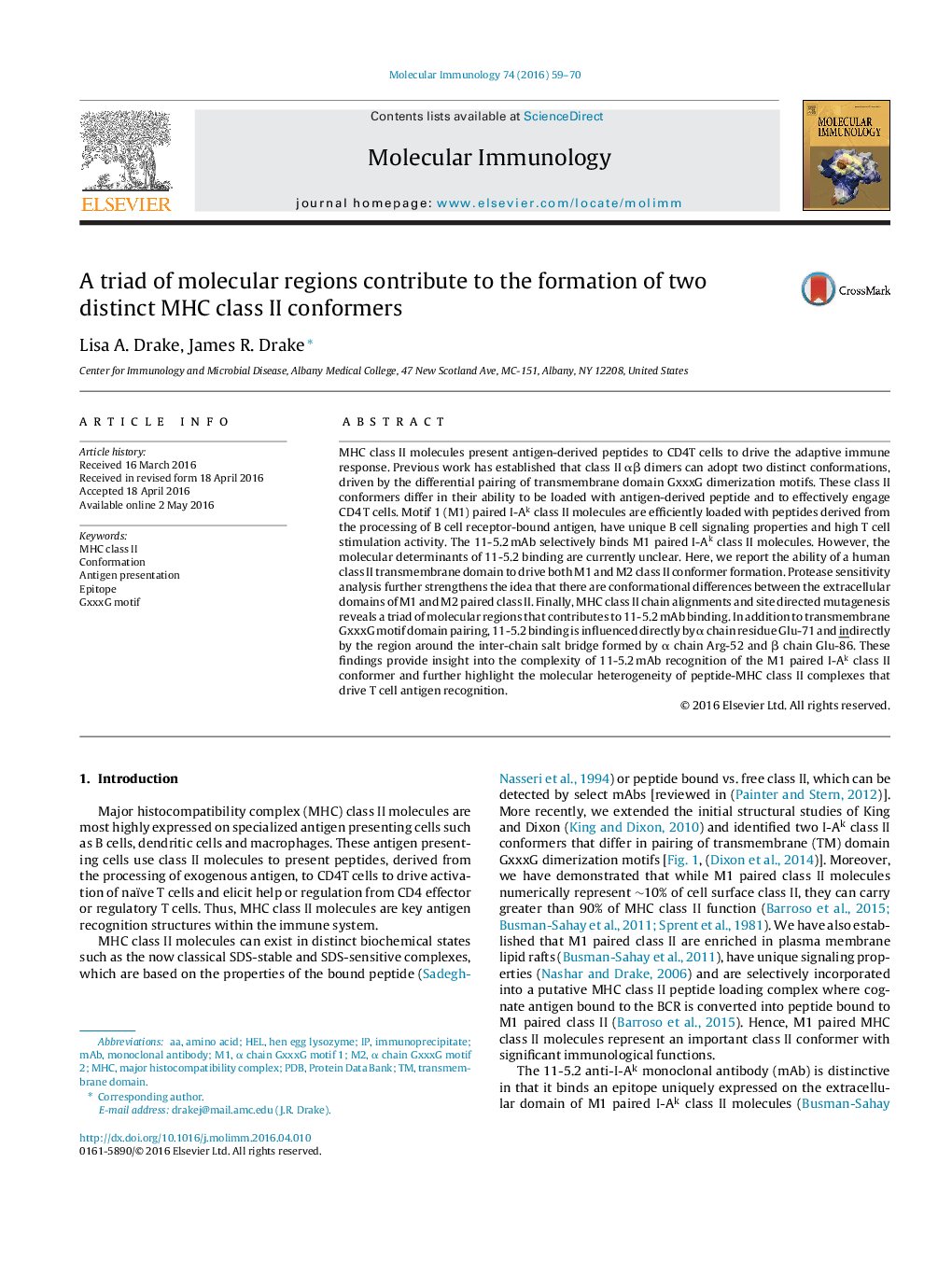| Article ID | Journal | Published Year | Pages | File Type |
|---|---|---|---|---|
| 2830528 | Molecular Immunology | 2016 | 12 Pages |
•The 11-5.2 mAb selectively recognizes M1 paired I-Ak MHC class II molecules.•M1 vs. M2 paired MHC class II molecules exhibit differential trypsin sensitivity.•I-Ak α chain glutamic acid 71 (Aαk E71) is critical to 11-5.2 mAb binding.•The α R52–β E86 inter-chain salt bridge has an allosteric effect on 11-5.2 binding.•Three molecular regions contribute to 11-5.2 mAb recognition of M1 paired class II.
MHC class II molecules present antigen-derived peptides to CD4T cells to drive the adaptive immune response. Previous work has established that class II αβ dimers can adopt two distinct conformations, driven by the differential pairing of transmembrane domain GxxxG dimerization motifs. These class II conformers differ in their ability to be loaded with antigen-derived peptide and to effectively engage CD4 T cells. Motif 1 (M1) paired I-Ak class II molecules are efficiently loaded with peptides derived from the processing of B cell receptor-bound antigen, have unique B cell signaling properties and high T cell stimulation activity. The 11-5.2 mAb selectively binds M1 paired I-Ak class II molecules. However, the molecular determinants of 11-5.2 binding are currently unclear. Here, we report the ability of a human class II transmembrane domain to drive both M1 and M2 class II conformer formation. Protease sensitivity analysis further strengthens the idea that there are conformational differences between the extracellular domains of M1 and M2 paired class II. Finally, MHC class II chain alignments and site directed mutagenesis reveals a triad of molecular regions that contributes to 11-5.2 mAb binding. In addition to transmembrane GxxxG motif domain pairing, 11-5.2 binding is influenced directly by α chain residue Glu-71 and indirectly by the region around the inter-chain salt bridge formed by α chain Arg-52 and β chain Glu-86. These findings provide insight into the complexity of 11-5.2 mAb recognition of the M1 paired I-Ak class II conformer and further highlight the molecular heterogeneity of peptide-MHC class II complexes that drive T cell antigen recognition.
